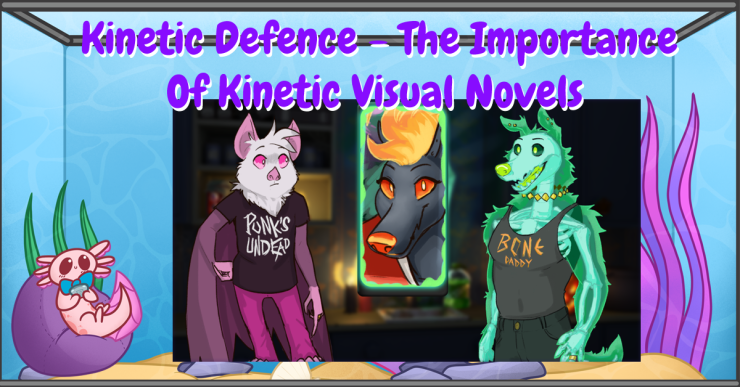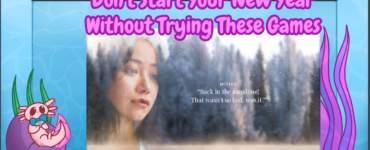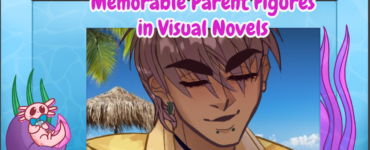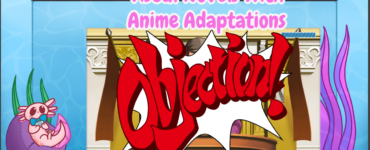Throughout the gaming industry, there is a level of derision towards those sorts of games that limit player interaction, with so-called “walking simulators,” where one simply follows a path and the story unfolds around them, being one of the most prominently argued over. In the world of visual novels there is a similar type of game that strikes up differing opinions, kinetic visual novels.
Kinetic novels are, to put it simply, a visual novel without choices. There are no differing routes, no exploration, no choice of what drink you order; the story is the story. And you follow it from start to finish usually unbothered by prompts or complications. And this is where the discussion really heats up. Is a visual novel where you don’t affect the outcome even a game? Is it “just” art, then? Or does it straddle some liminal space between the two? The answer, of course, is both simple and far more complex.
Kinetic novels are as much art as any storybook, and as much a game as any other. By pure definition alone, a video game being something you “play” on an electronic device, it meets the criteria, sure. You start the game, and you decide to progress through your controller of choice. The limitation of interaction doesn’t stop it being a game, or change whether it’s good or not. The experience is the important thing.
But we aren’t here today to call kinetic novels games or not, or discuss if they should count as art. I’m here to share some love for the medium and for some of the kinetic visual novels that might give you a taste for more.
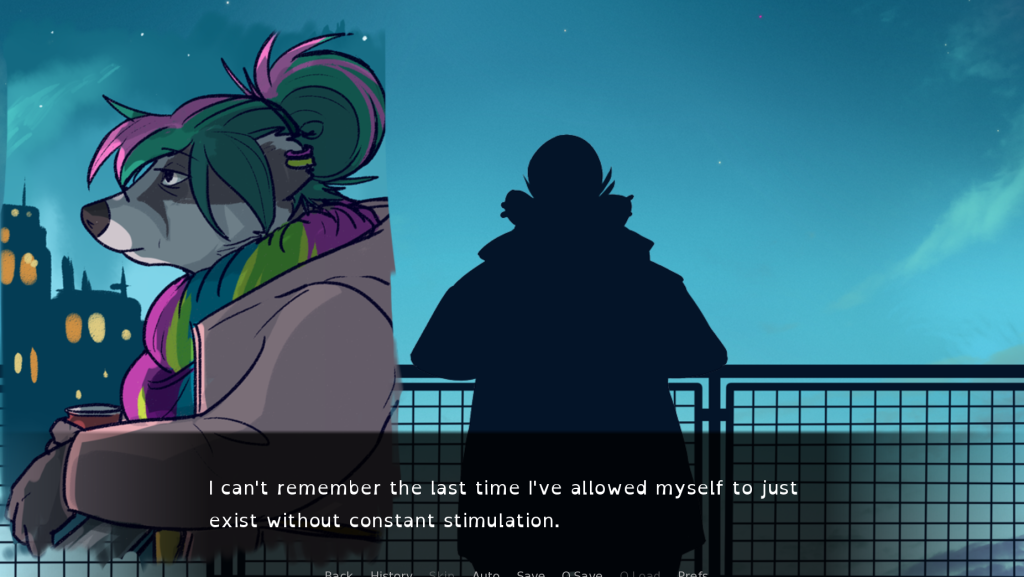
LAST (18+) by high-tea
Price: Free
Kinetic novels are a medium perfect for small stories, or possibly bigger stories told in small ways, with LAST by high-tea being a great example. A story about both the end of the world and opening up to others about being non-binary (these two things not being related), this tale doesn’t need choices to be poignant, to make it more real. It’s two characters existing as their true selves for one night.
Where is the interaction, though? It’s in turning the page, clicking the button, choosing to continue to experience the words, the music, the expression, in a way that was real to the person writing it. There is one ending here. One path forward. Placing one step in front of the other until you make it to the end.
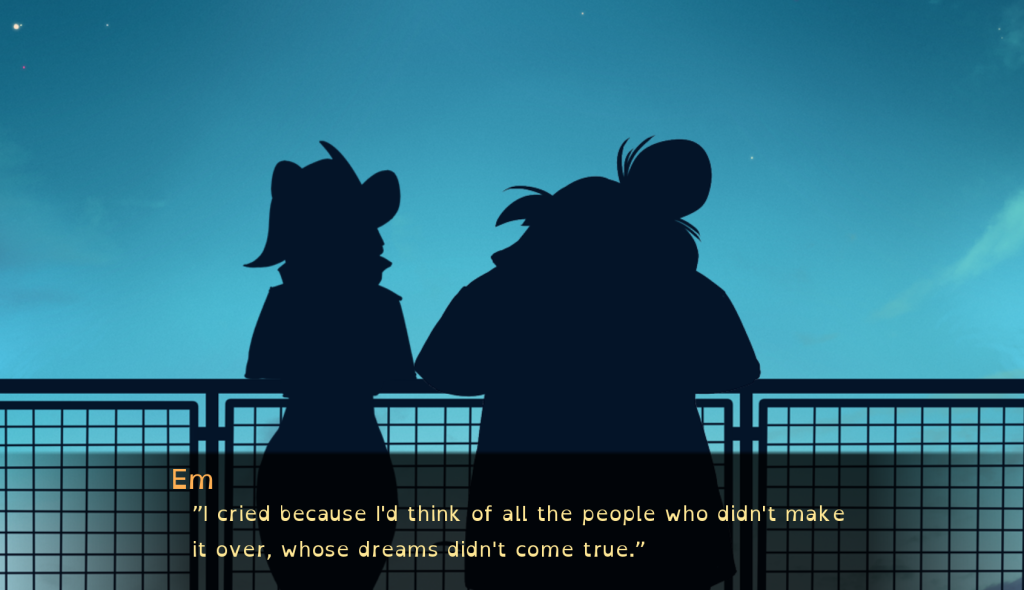
In the end, LAST gives you only the choices that matter: “Here are the content warnings, do you want to keep going?” and “This is where things start getting spicy, do you want to skip it, keep reading, or quit?” And honestly, that’s all it needs. It acknowledges the need for consent, far better than most novels do, and gives the player an obvious out.
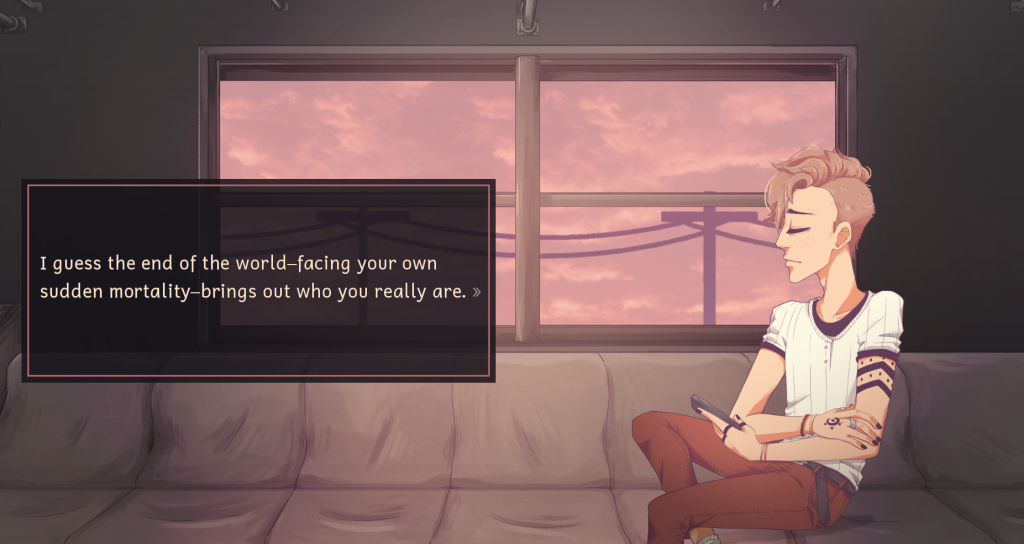
Yesterday, the World Ended by Ronove
Price: Free
Another thing that makes kinetic visual novels attractive, especially to developers, is that in simplifying the direction of a story by only having a single path, it makes it easier to be true to their intention. Without branching paths, a story can be written in weeks, or even days, with one singular emotional focus. As such, you’ll often find these kinds of games written for game jams, where completing a game quickly is part of the challenge.
Yesterday, the World Ended only takes a few minutes to play through, but the tone and writing carries a single thread, that of yourself and a person who hurt you possibly being the last people left on Earth, and creates a powerful experience out of it. In a short story collection, this might only be a couple of pages, but done in this way, it becomes something far more impactful that lingers in your mind long after the credits.
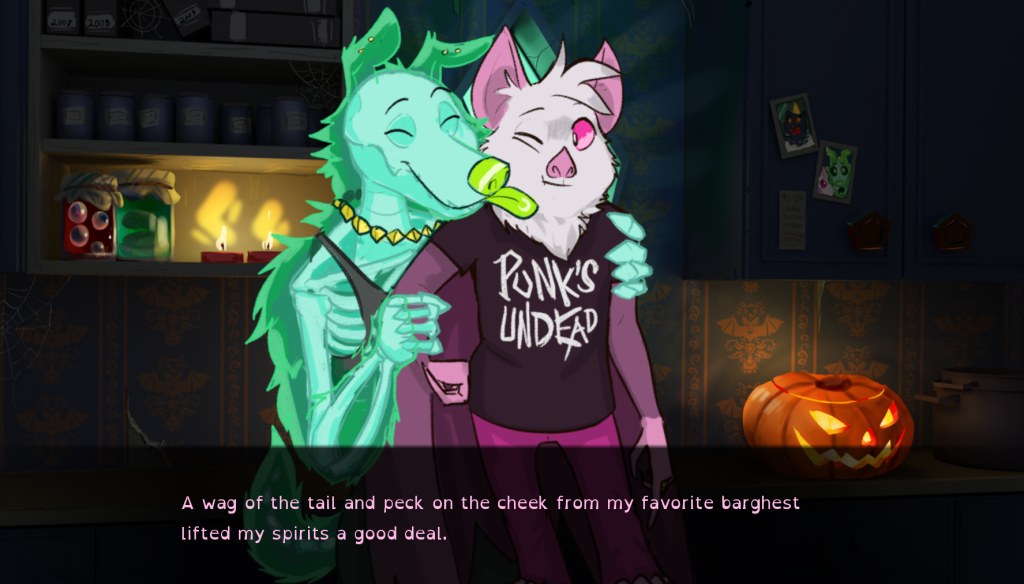
Scary Gourmet by high-tea & TinySamm
Price: Free
Of course, one of the greatest things about kinetic novels is their accessibility. Self-contained stories that aren’t complicated by player choice make for something far more approachable than the looming threat of “your actions here will have consequences” that are often so anxiety-inducing, especially for newcomers to the medium.
Scary Gourmet, a hauntingly wholesome tale of two undead dads making a meal together for their vegan hellhound daughter and surprised girlfriend guest, is a delicious delight that is emotional enough as it is, and might not have been such an entertaining time with a possibility that everything could have gone wrong through player choice. By the end, you know that this is how the creators wanted to story to end, and that’s what’s important.
When it comes down to it, the medium of expression matters less in game development than whether the expression works as intended. Kinetic visual novels don’t need to seek validation to be important games, because they are. If, through playing them, the player experiences what the developer wanted them to, then their work was successful, whether or not story-altering decisions were made along the way.
From here, all I can do is recommend you try your hand at playing some of these incredible experiences. Each one is a slice of emotion pie baked by the hands of those who knew what they wanted to say and were proud enough to say it.

